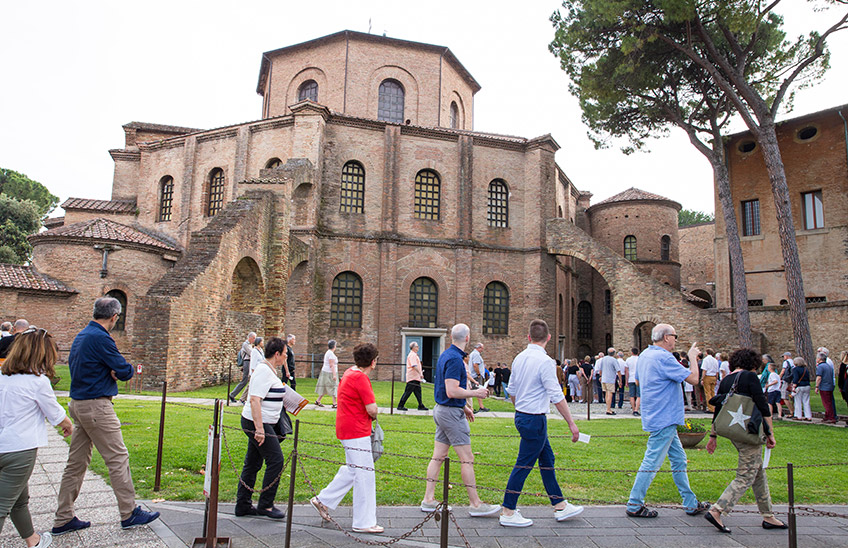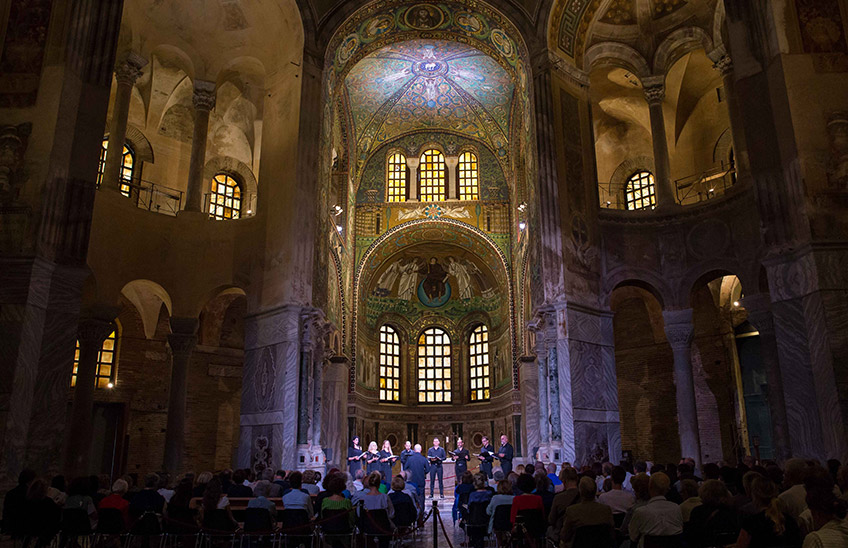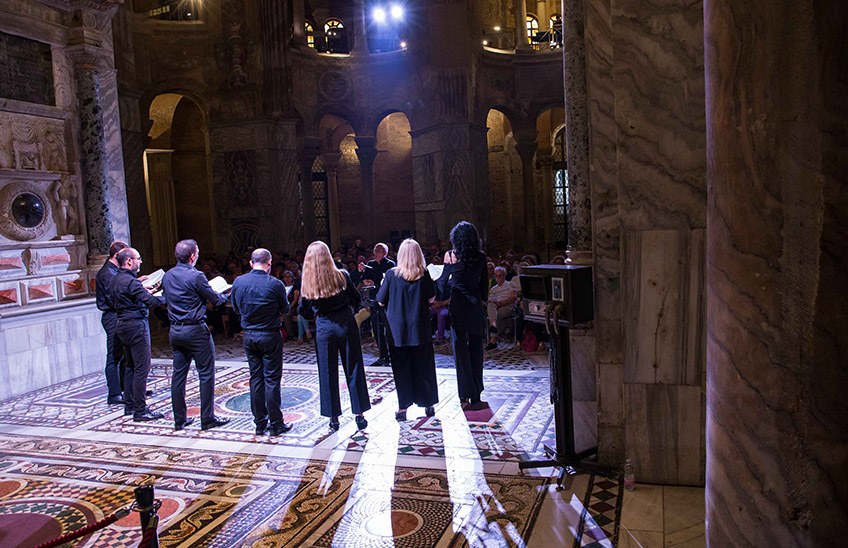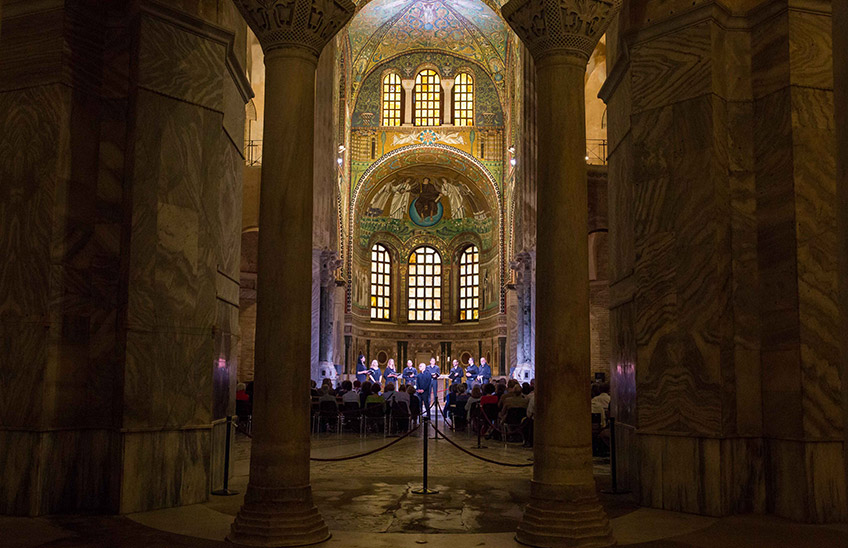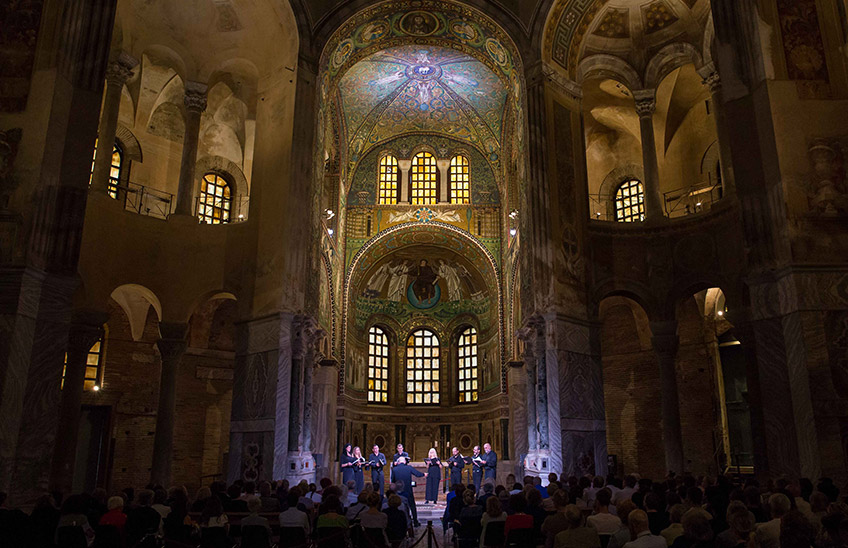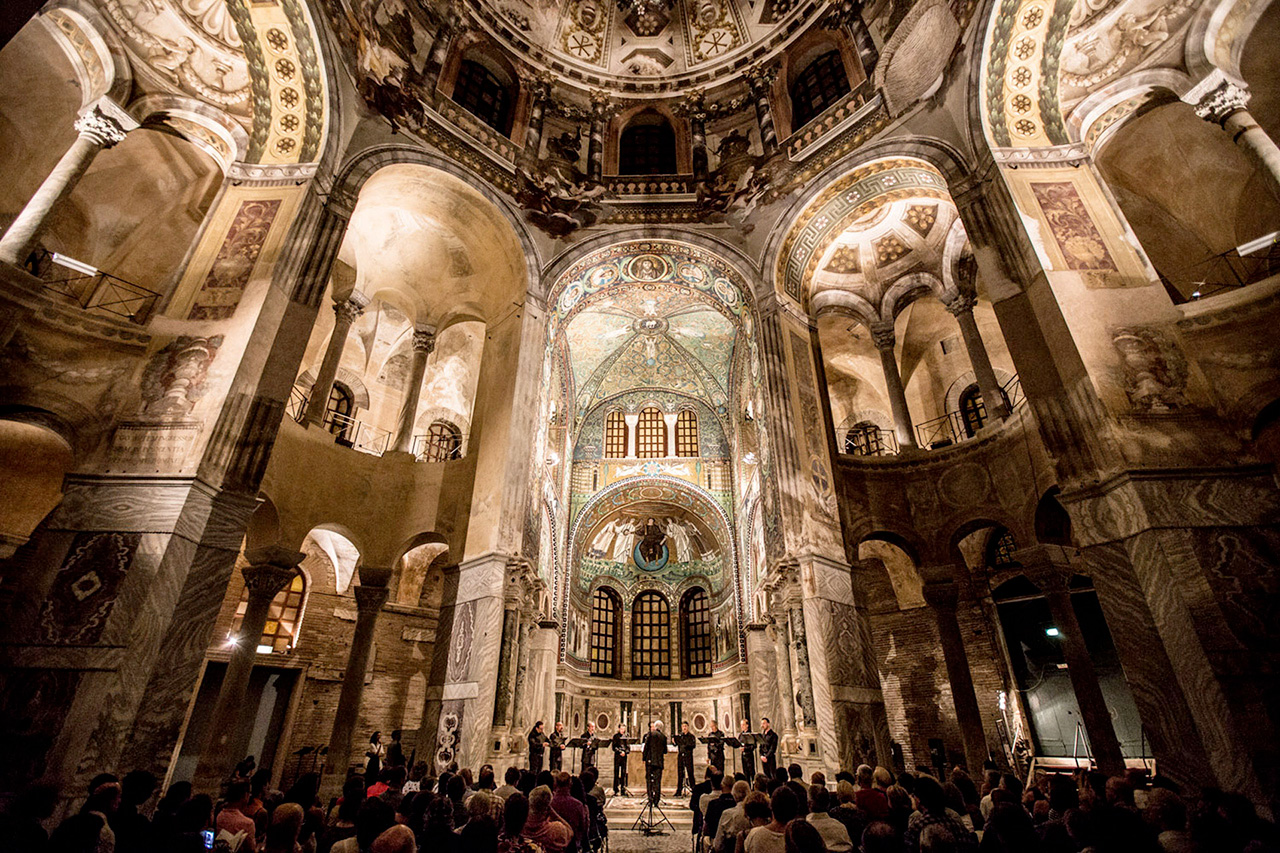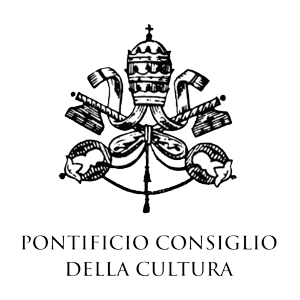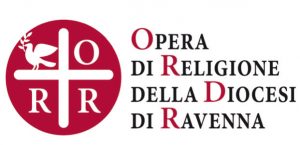© Jenny Carboni
Vespers at San Vitale
Domus supra petram
Palestrina: buildings of the spirit
LiberaVox Ensemble
Carla Ferrari, Matelda Viola sopranos
Ekaterina Vilpo, Antonello Dorigo contraltos
Adriano Caroletti, Fabrizio Scipioni tenors
Giuliano Mazzini, Guido Vetere basses
conductor Luigi Taglioni
Programma
Giovanni Pierluigi da Palestrina (1525-1594)
Sicut Cervus 4-voice motet
from Motecta festorum totius anni cum Communi sanctorum quaternis vocibus Liber Secundus, 1604
Ave Maris Stella 4-5-voice hymn
from Hymni totius anni, 1589
Quae est ista4-voice motet
from Motecta festorum… Liber Primus, 1564
Veni Creator Spiritus 4-5-voice motet
from Hymni…, 1589
Stabat Mater 8-voice motet post 1591, ed. 1876
Super Flumina Babylonis 4-voice motet
from Motecta festorum …Liber Secundus, 1604
Tu es Petrus 6-voice motet
from Motettorum Liber Secundus a 5-8vv., 1572
Magnificat vii toni 5-voice motet
from Magnificat octo tonum quinis et senis vocibus Liber Tertius, 1591 ed. 1885
“A house built on the rock”: the Gospel compares it to the wisdom of those who build their life on deep and substantial listening of the Word of God. The faith of the Church with its millenary tradition is built on the rock of Christ. Indeed the slow and expert mechanism of every human construction is harmoniously consistent with an original interpretation of the various developments of polyphony: the gradual vertical stratification of vocal lines is perfectly comparable to a construction made not of bricks but of sounds and voices.
The French-Burgundian-Flemish school presented a progressive refinement of composition techniques in songs based on multiple voices, and developed into the most complicated polyphonic structure that was stigmatized by the Council of Trento. During this polyphonic Renaissance, generations of musicians moved from Northern Europe, ultimately reaching Italy, where Palestrina “condensed” its riches.
A pupil of Desprez and a contemporary of Lasso, Palestrina successfully created a sort of spiritual reconciliation between vertical intertwining and horizontal perception of singing. Palestrina’s sound is the magnificent synthesis of this intense artistic period because he harmonised the complexity of Flemish polyphonic studies with musical sensitivity based on singing, which is intimately “sacred” and at the same time “human”.
